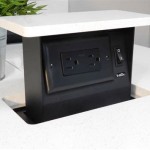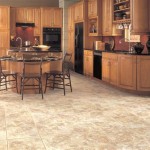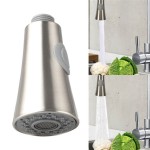How Much To Tile a Small Kitchen Floor
Tiling a kitchen floor can be a rewarding DIY project, adding both beauty and durability to a high-traffic area. However, before you dive into the world of grout and mortar, it's crucial to understand the costs involved. This article will explore the various factors that influence the price of tiling a small kitchen floor, providing a comprehensive guide to help you budget effectively.
1. Tile Selection: The Foundation of Cost
The type of tile you choose will be the most significant determinant of your overall cost. Ceramic tiles, a popular choice for kitchens due to their durability and affordability, typically range from $1 to $10 per square foot. Porcelain tiles, known for their superior strength and water resistance, can cost anywhere from $2 to $20 per square foot. Other options include natural stone tiles (like granite or marble) which can be significantly more expensive, starting at around $5 per square foot and reaching upwards of $50 or more.
Beyond the base material, tile size, shape, and design complexity also factor into the price. Larger tiles generally require less cutting and installation time, potentially lowering labor costs. Intricate patterns or mosaics will naturally add to the cost of both tile and installation.
2. Labor Costs: A Significant Factor
The cost of hiring a professional tile installer can vary widely depending on your location, the installer's experience, and the complexity of the job. Labor costs are typically quoted on an hourly basis or per square foot. Expect to pay anywhere from $5 to $20 per square foot for professional installation, depending on factors like the tile type, the existing floor conditions, and any intricate cuts or design elements.
If you are considering DIY installation to save on labor costs, it's crucial to factor in the cost of tools, materials, and the potential for mistakes that might require re-work. While DIY can save money, it's essential to assess your skill level and time commitment before undertaking this project.
3. Additional Materials: Don't Forget the Extras
In addition to the tile itself, you'll need a range of other materials for a successful tiling project. These include:
- Thinset Mortar: This adhesive bonds the tile to the subfloor, costing around $10 to $20 per bag.
- Grout: Filling the gaps between tiles, grout comes in various colors and finishes, with prices ranging from $5 to $20 per bag.
- Backer Board: For wet areas like kitchens, a waterproof backer board is often required, adding around $1 to $2 per square foot to the cost.
- Tile Cutting Tools: If you're doing the installation yourself, invest in a tile saw or cutter, costing anywhere from $50 to $200 depending on the type.
- Other Supplies: Don't forget essential items like spacers, trowels, a mixing bucket, and cleaning supplies.
It's crucial to factor in these additional costs when budgeting for your tiling project. A little extra planning can go a long way in ensuring you have all the necessary materials on hand.
4. Subfloor Preparation: A Hidden Cost
The condition of your existing floor can significantly impact the cost of tiling. If the subfloor is uneven or damaged, it will need to be repaired or leveled before tile installation, adding additional expense. Expect to pay anywhere from $2 to $5 per square foot for subfloor preparation, depending on the extent of the work required.
It's always a good idea to have a professional assess your subfloor condition before embarking on a tiling project. This initial investment can save you significant headaches and potential cost overruns down the road.
5. Budgeting Tips: Stay Within Your Limits
To ensure you stay within your budget, follow these tips:
- Get Multiple Quotes: Compare prices from several tile suppliers and installers to secure the best deals.
- Consider DIY Installation: While it requires time and effort, DIY installation can save you on labor costs.
- Shop Around for Materials: Don't settle for the first tile supplier you find, explore options and compare prices to find the best value.
- Factor in Unexpected Costs: Always leave room for unforeseen expenses, as tiling projects can sometimes require adjustments or additional materials.
- Prioritize Quality: While it's tempting to cut corners on materials, investing in durable tiles and quality installation will ultimately pay off in the long run.
By carefully considering these factors and implementing these budgeting tips, you can create a beautiful and functional tiled kitchen floor within your desired price range.

Kitchen Flooring That Will Endure The Test Of Time

10 Kitchen Floor Tile Ideas Tips Stone Depot

Kitchen Plant Tiles Flooring Tenstickers

Herringbone Floor Tile In My Kitchen The Inspired Room

15 Small Kitchen Tile Ideas Flooring Tiles Floor Plans

10 Inspired Design Ideas For Small Kitchen Ant Tile Triangle Tiles Mosiacs Floors Bathroom Walls Accents
:strip_icc()/102668636-754bee9c109d495a953e15475160dd84.jpg?strip=all)
Our Guide To Removing And Replacing Tile Floors With Hardwood

Feast Your Eyes On These Exclusive 13 Kitchen Floor Tiles

8 Small Kitchen Flooring Ideas Real Homes

Floor Tile Ideas For Small Kitchens And Stone
Related Posts








